|
Based on the book "The Big Book of Chess" by Eric Schiller, here are the checkmates that I found on pages 88-98. Back Rank Mate: A rook moves to the back rank, while the king is trapped by the pawns.

click for larger viewAnastasia's Mate: A rook moves to check the king, while the knight covers escape squares.

click for larger viewAnderssen's Mate: A rook moves to the back rank corner, protected by a pawn, which is in turn defended by the king.

click for larger viewArabian Mate: A rook, protected by the knight, moves to check a king in the corner.

click for larger viewBlackburne's Mate: One bishop gives check, protected by a knight that covers one flight square, while the other bishop covers the other escape squares.

click for larger viewBoden's Mate: One bishop moves to check the black king, which is hemmed in by its own pieces and cannot flee because of white's other bishop.

click for larger viewDamiano's Mate: The queen gives checkmate, protected by the pawn.
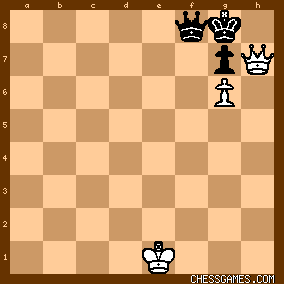
click for larger viewKnight Corner Mate: Use the knight to give check, while the rook stands guard on the file, and the pawn prevents the king from moving forward.

click for larger viewCozio's Mate: The queen delivers the checkmate, attacking the enemy king while the queen is guarded by its own king. 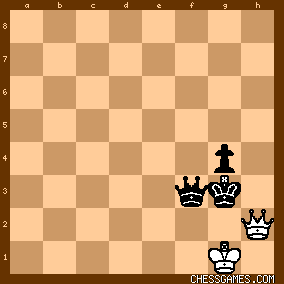
click for larger viewDamiano Bishop Mate: The queen goes directly in front of the king, guarded by the bishop.
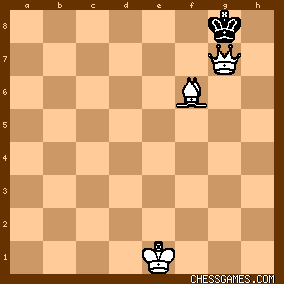
click for larger viewDavid and Goliath Mate: A mere pawn checkmates the king, protected by the other pawn. Black's own pieces prevent its escape.

click for larger viewDouble Bishop Mate: The bishop moves to atttack the king along the long diagonal.

click for larger viewDovetail Mate: The queen checks the king, protected by the pawn.
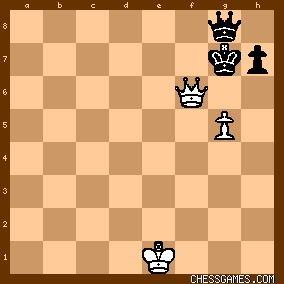
click for larger viewEpaulette Mate: Move the queen two squares in front of the enemy king, whose flanking rooks prevent any escape.
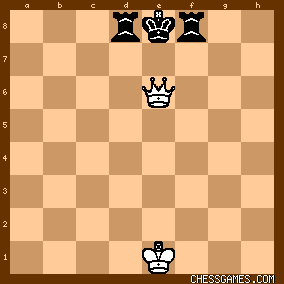
click for larger viewGreco's Mate: The queen goes to the right edge of the board. The king's escape is cut off by the other bishop.

click for larger viewHook Mate: The rook slides over to the e-file so that it attacks the king. The knight protects it, and the pawn cuts off the remaning flight square.

click for larger viewCorner Mate: The rook moves to the corner, protected by the bishop.

click for larger viewLegal's Mate: The knight moves into a position to check the king. The bishop is guarded by the other knight, and the enemy pieces block the king's escape.

click for larger viewLolli's Mate: The pawn can guard the queen on the checkmating square.
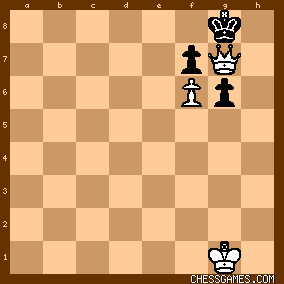
click for larger viewMax Lange's Mate: The queen moves to checking position next to the king, defended by its bishop.
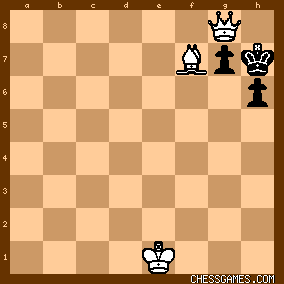
click for larger viewMinor Piece Mate: White gives check with the bishop, and the knight covers the king's escape squares.
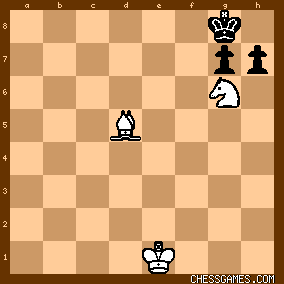
click for larger viewMorphy's Mate: The bishop gives check on the long diagonal. The rook and pawn insure that the king cannot escape.

click for larger viewReti's Mate: THe bishop goes to the edge of the board, giving check while guarded by the rook.
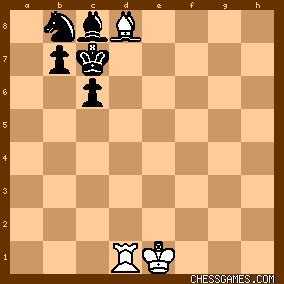
click for larger viewOpera Mate: The rook checkmates on the back rank; it has the bishop as a protector.
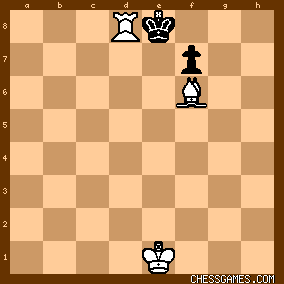
click for larger viewPillsbury's Mate: The rook moves over to the g-file to give check to the king, who can't get to the the corner because of the bishop.
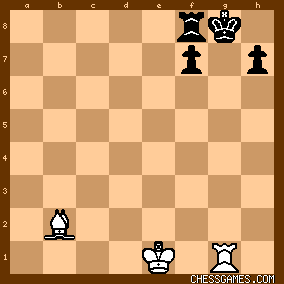
click for larger viewQueen and Pawn Mate: The pawn acts as a guardian to protect the queen as it checkmates the king.
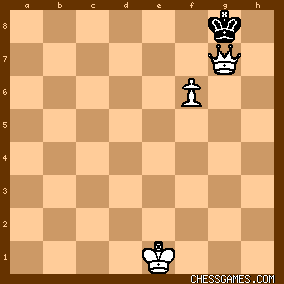
click for larger viewSmothered Mate: The king is surrounded by its own forces, but cannot escape from the knight check.

click for larger viewNote: I have disallowed smothered mates in this collection because I already have a collection: Game Collection: Checkmate: Smothered. Suffocation Mate: The knight checks at e7, and the bishop covers the escape squares.

click for larger viewSwallow-Tail Mate: The queen takes up a position directly in front of the king, defended by the bishop.

click for larger viewCorridor's Mate: The queen delivers the checkmate on the edge of the board. A rook would do the job just as well.

click for larger viewMighty Queen Mate: The queen moves to the back rank, and checkmates all by itself, since the pawn blocks the king's escape.

click for larger viewIn order by mate listed, original mate, then date.
| 


